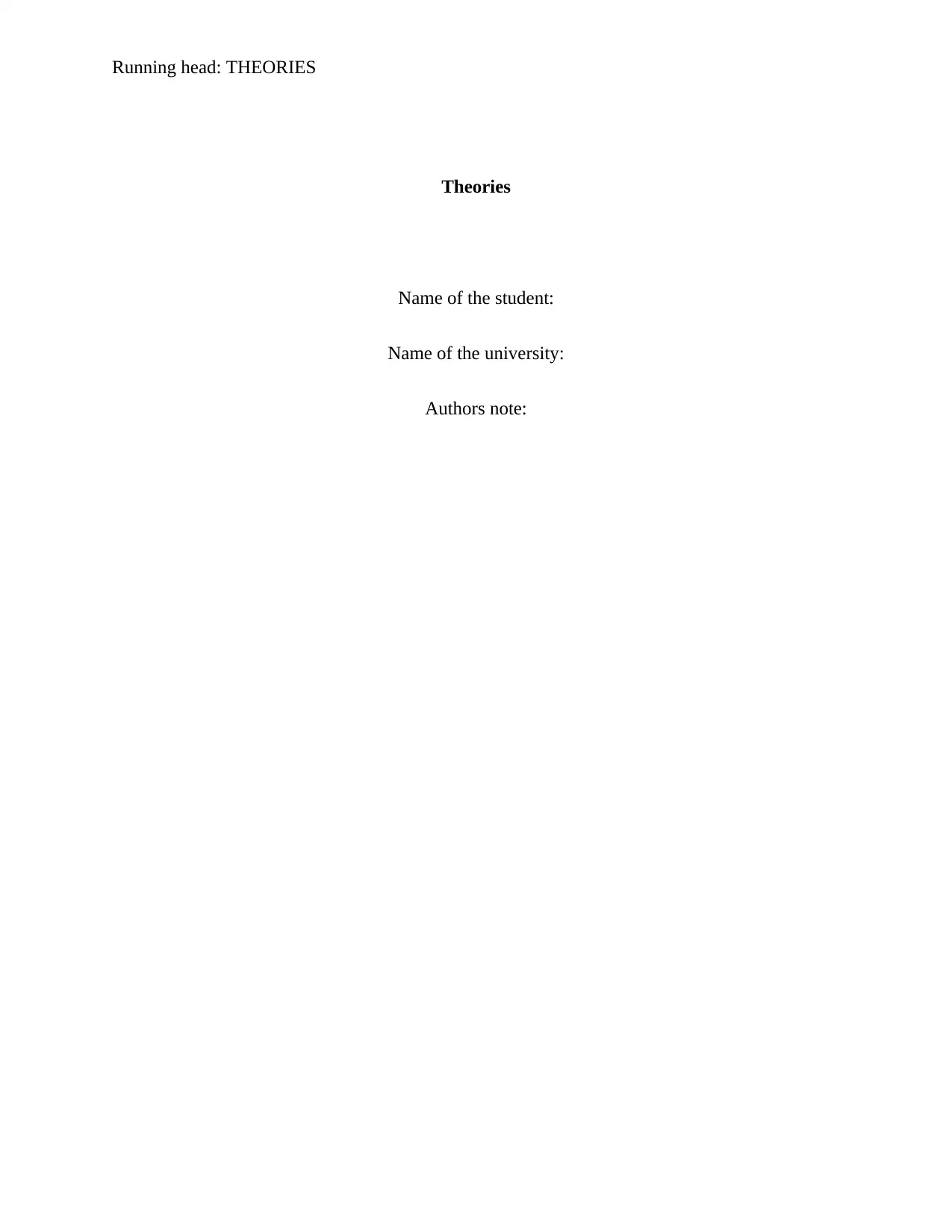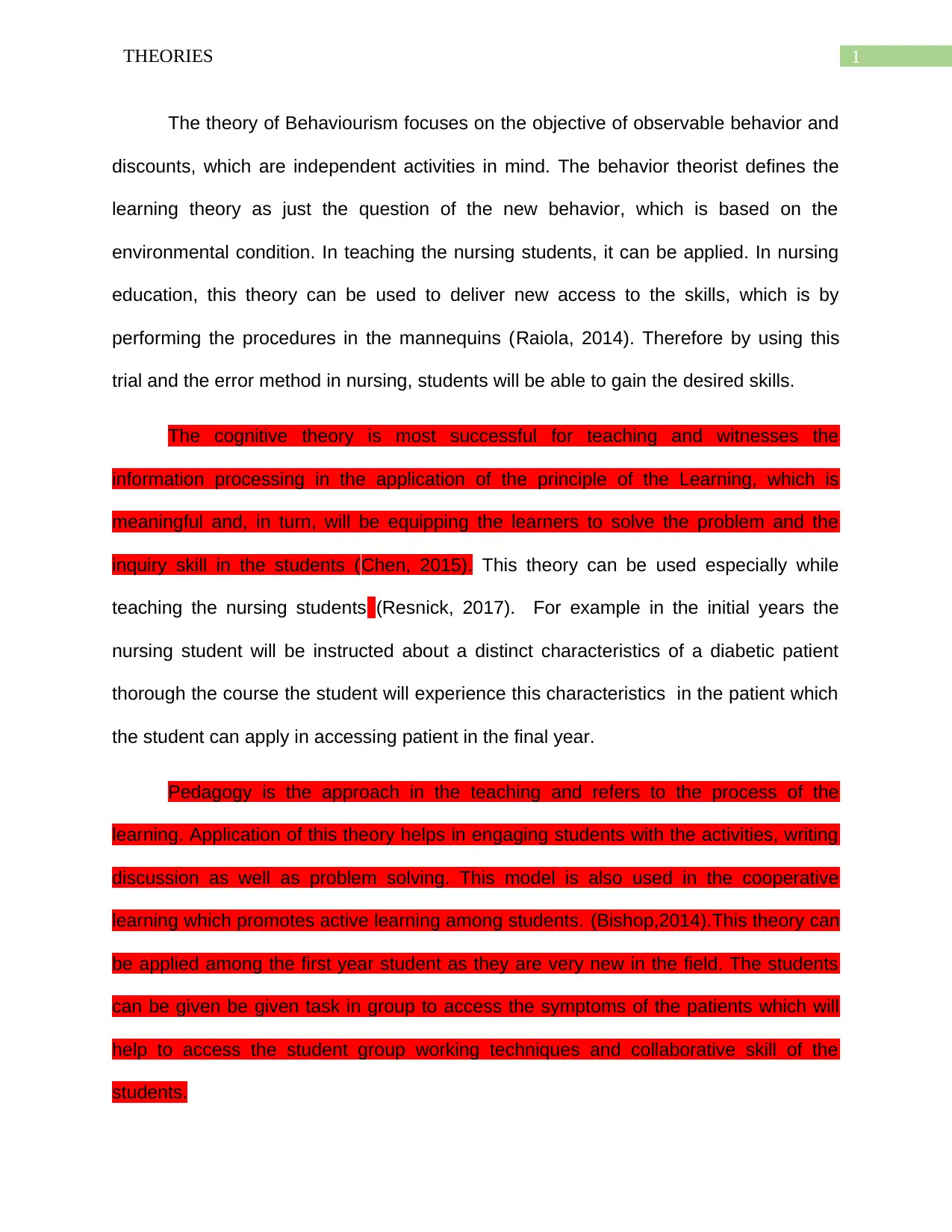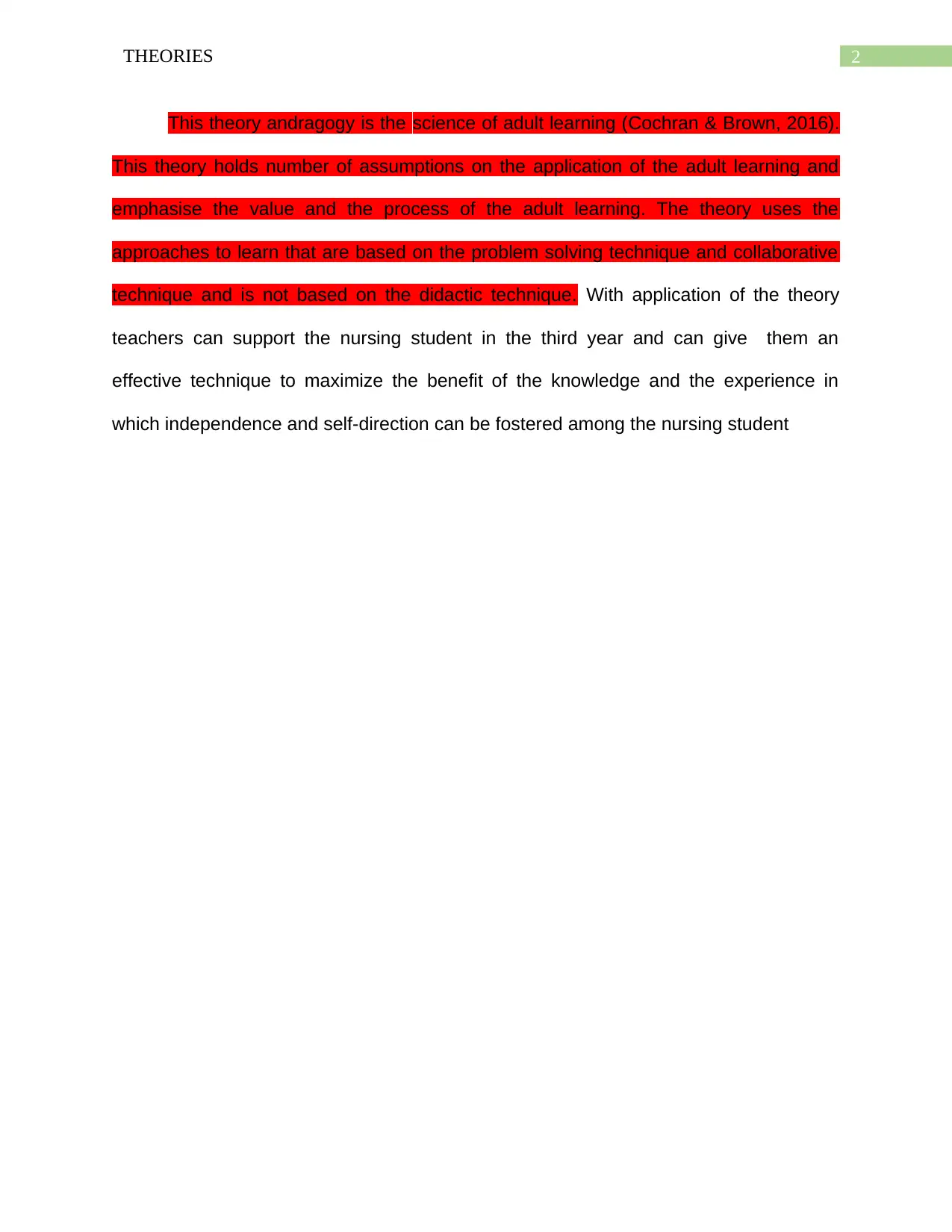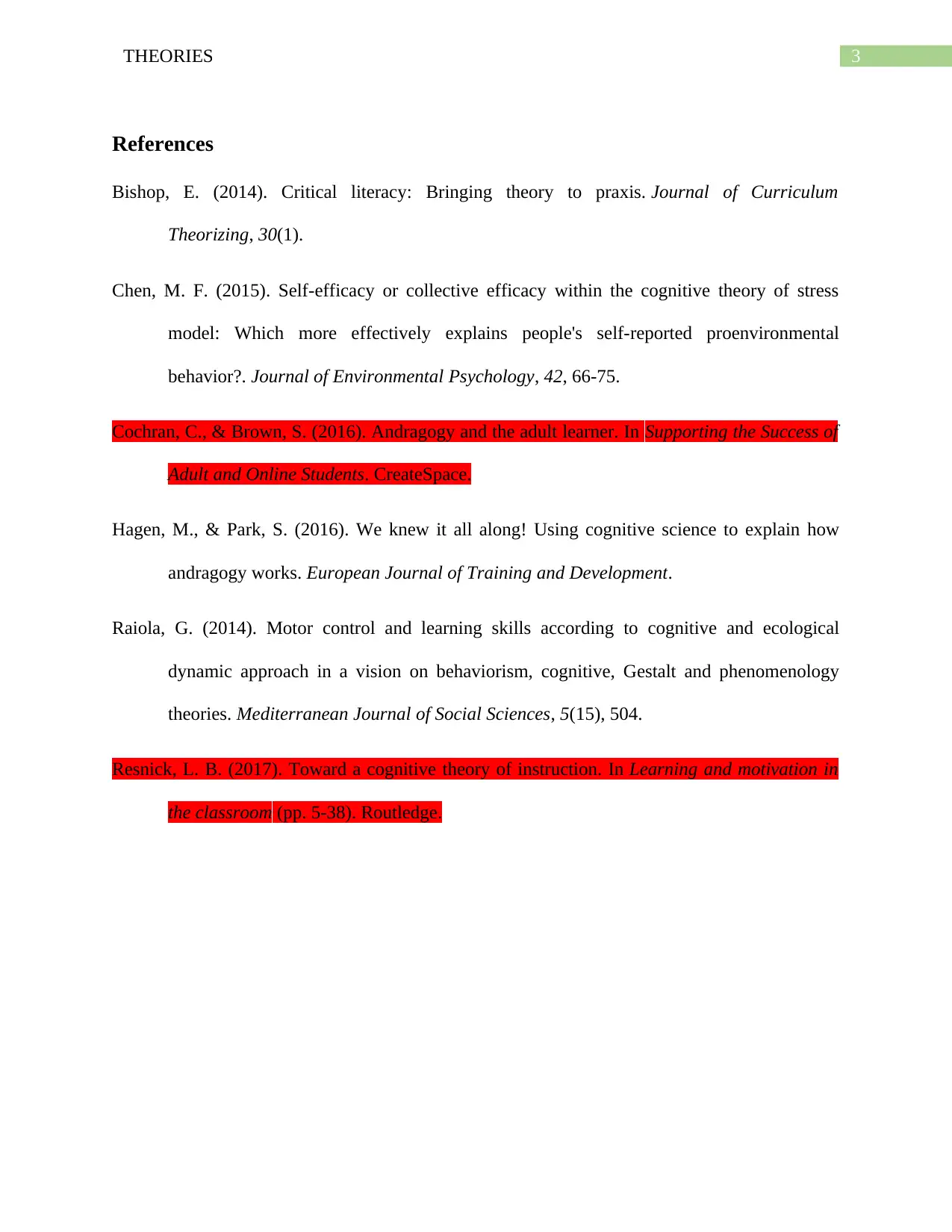LTAP Assignment: Applying Nursing Theories to Student Mentorship
VerifiedAdded on 2022/08/27
|5
|674
|18
Essay
AI Summary
This essay explores the application of various learning theories—behaviorism, cognitivism, pedagogy, and andragogy—within the context of nursing education and mentorship. The author discusses how these theories can be utilized to develop effective learning, teaching, and assessment strategies for nursing students, particularly those who may be underachieving. The essay emphasizes the role of mentors in identifying students' learning styles, providing tailored support, and fostering their development in clinical practice. Specific examples are provided to illustrate how each theory can be applied, such as using mannequins for hands-on skill development (behaviorism), facilitating information processing and problem-solving (cognitivism), engaging students in group activities (pedagogy), and promoting self-direction in adult learners (andragogy). The essay highlights the importance of mentorship in guiding students through their clinical placements, addressing challenges, and ultimately helping them achieve successful outcomes, with a focus on how mentors can apply these theories to create supportive and effective learning environments. The assignment references relevant literature to support its arguments and concludes by considering how the insights gained would apply to the author's future practice as a mentor.
1 out of 5












![[object Object]](/_next/static/media/star-bottom.7253800d.svg)